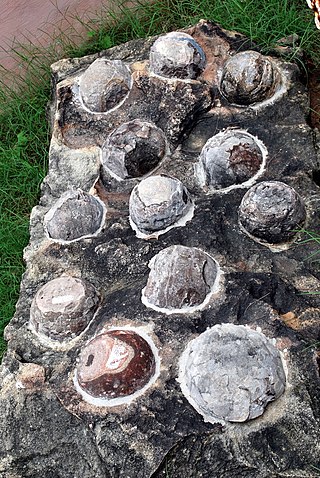
Zhejiang is an eastern coastal province of the People's Republic of China. Its capital and largest city is Hangzhou, and other notable cities include Ningbo and Wenzhou. Zhejiang is bordered by Jiangsu and Shanghai to the north, Anhui to the northwest, Jiangxi to the west and Fujian to the south. To the east is the East China Sea, beyond which lies the Ryukyu Islands. The population of Zhejiang stands at 64.6 million, the 8th largest in China. It has been called "the backbone of China" because it is a major driving force in the Chinese economy and being the birthplace of several notable people, including the Chinese Nationalist leader Chiang Kai-shek and entrepreneur Jack Ma. Zhejiang consists of 90 counties.

Hangzhou, also romanized as Hangchow, is the capital and most populous city of Zhejiang, China. It is located in the northwestern part of the province, sitting at the head of Hangzhou Bay, which separates Shanghai and Ningbo. Hangzhou grew to prominence as the southern terminus of the Grand Canal and has been one of China's most renowned and prosperous cities for much of the last millennium. It is a major economic and e-commerce hub within China, and the second biggest city in the Yangtze Delta after Shanghai. Hangzhou is classified as a sub-provincial city and forms the core of the Hangzhou metropolitan area, the fourth-largest in China after Guangzhou-Shenzhen Pearl River agglomeration, Shanghai-Suzhou-Wuxi-Changzhou conurbation and Beijing. As of 2019, the Hangzhou metropolitan area was estimated to produce a gross metropolitan product (nominal) of 3.2 trillion yuan, making it larger than the economy of Nigeria. As of the 2020 Chinese census, it had a total population of 11,936,010 inhabitants. However, its metropolitan area, populated by 13.035 million people over an area of 8,107.9 km2 (3,130.5 sq mi), consists of all urban districts in Hangzhou and 3 urban districts of the city of Shaoxing.

Zhejiang Professional Football Club, commonly referred to as Zhejiang FC or simply Zhejiang, is a Chinese professional football club based in Hangzhou, Zhejiang, that competes in the Chinese Super League, the top tier of Chinese football. Traditionally, Zhejiang had played its home matches at the Yellow Dragon Sports Center, located within Xihu District, but currently plays its home matches at the Huzhou Olympic Sports Center in Huzhou, Zhejiang. The club's main investors are the Zhejiang-based Greentown China Holdings Limited company and the Zhejiang Energy Group.

Rhinogobius is a genus of primarily freshwater gobies native to tropical and temperate parts of eastern Asia. Most are small, streamlined in shape, and often sexually dimorphic. Few are of commercial importance, but R. duospilus is fairly widely traded as an aquarium fish.

Dongyangosaurus is a genus of titanosaurian sauropod dinosaur from the Late Cretaceous. The only species is Dongyangosaurus sinensis, from which only a single fragmentary skeleton is known, coming from the Zhejiang province of eastern China. It was described and named by Lü Junchang and colleagues. Like other sauropods, Dongyangosaurus would have been a large quadrupedal herbivore.
Taihu Wu (吳語太湖片) or Northern Wu (北部吳語) is a Wu Chinese language spoken over much of southern part of Jiangsu province, including Suzhou, Wuxi, Changzhou, the southern part of Nantong, Jingjiang and Danyang; the municipality of Shanghai; and the northern part of Zhejiang province, including Hangzhou, Shaoxing, Ningbo, Huzhou, and Jiaxing. A notable exception is the dialect of the town of Jinxiang, which is a linguistic exclave of Taihu Wu in Zhenan Min-speaking Cangnan county of Wenzhou prefecture in Zhejiang province. Speakers in regions around Taihu Lake and Hangzhou Bay, are the largest population among all Wu speakers. Taihu Wu dialects such as Shanghainese, Shaoxing and Ningbo are mutually intelligible even for L2 Taihu speakers.

Typhoon Fred was a powerful tropical cyclone that caused extensive damage in southeastern China in mid-August 1994. Regarded as the worst typhoon to affect Zhejiang in 160 years, it originated as an area of disturbed weather over the open West Pacific on August 13. The system moved west-southwest and developed into a tropical depression on August 14. Early on August 15, it intensified into a tropical storm. Fred intensified at a steady rate over the course of several days while moving toward the west. The storm intensified into a typhoon on August 16 and into a super typhoon three days later. Late on August 19, the Japan Meteorological Agency (JMA), the principal organization in the West Pacific, estimated 10-minute sustained winds of 185 km/h (115 mph). The Joint Typhoon Warning Center (JTWC), meanwhile, assessed 1-minute sustained winds of 240 km/h (150 mph). After peaking in intensity, Fred veered to the north of Taiwan and struck the China mainland near Wenzhou early on August 21. The system degraded once inland and dissipated near Wuhan on August 22.

Rhinogobius flumineus, commonly known as the lizard goby or kawa-yoshinobori, is a species of goby endemic to Japan where it is found in the mid- to upper reaches of fast-flowing rivers. This species can reach a length of 7 centimetres (2.8 in) TL.

Wuyanling National Nature Reserve is a nature reserve in Taishun County, in the southern part of Zhejiang Province. The reserve occupies a mountainous, forested area. The highest peak is Baiyun Peak, which is 1,611 metres (5,285 ft) high.

Li Qiang is a Chinese politician. He became the 8th premier of the People's Republic of China in March 2023, having been elevated to the second-ranking member on the Chinese Communist Party (CCP) Central Committee Politburo Standing Committee in October 2022. Li was the party secretary for Shanghai City from 2017 to 2022 where he pursued pro-business policies and handled the response to the COVID-19 pandemic.

Egg fossils are the fossilized remains of eggs laid by ancient animals. As evidence of the physiological processes of an animal, egg fossils are considered a type of trace fossil. Under rare circumstances a fossil egg may preserve the remains of the once-developing embryo inside, in which case it also contains body fossils. A wide variety of different animal groups laid eggs that are now preserved in the fossil record beginning in the Paleozoic. Examples include invertebrates like ammonoids as well as vertebrates like fishes, possible amphibians, and reptiles. The latter group includes the many dinosaur eggs that have been recovered from Mesozoic strata. Since the organism responsible for laying any given egg fossil is frequently unknown, scientists classify eggs using a parallel system of taxonomy separate from but modeled after the Linnaean system. This "parataxonomy" is called veterovata.
Rhinogobius aporus is a species in the goby subfamily Gobionellinae endemic to China. It was first described as Pseudorhinogobius aporus, but that genus has been brought into synonymy with Rhinogobius.

Yongjinglong is an extinct genus of titanosauriform sauropod dinosaur known from the Early Cretaceous of Lanzhou-Minhe Basin of Gansu Province, China. It contains a single species, Yongjinglong datangi.

The Cao'e River is one of the largest rivers in Zhejiang Province of East China, named after Cao E, a Han dynasty girl venerated for her filial piety. Its main source is in Pan'an County in the Dapan Mountains, and the river empties into the Hangzhou Bay near the Qiantang River estuary. It has a total length of 182.4 kilometres (113.3 mi), and a basin area of 5,930.9 square kilometres (2,289.9 sq mi).

The Qiantang River, formerly known as the Hangchow River or Tsientang River, is a river in East China. An important commercial artery, it runs for 459 kilometers (285 mi) through Zhejiang, passing through the provincial capital Hangzhou before flowing into the East China Sea via Hangzhou Bay south of Shanghai. Its original name, the "Zhe River" or "Zhe Jiang", is the origin of the name of Zhejiang province. The river is also known, along with Hangzhou Bay, for having what is called by locals as the "Silver Dragon", the world's largest tidal bore, a phenomenon where leading edge of the incoming tide form a wave that can rise to a height of 9 meters (30 ft) and travels up the river or narrow bay at top speeds of 40 km/h against the direction of the river or bay's current, and can be seen from miles away.
Paradictyoolithus is an oogenus of dictyoolithid dinosaur egg from the Zhejiang Province, China. They are nearly spherical eggs, measuring up to 13.9 cm (5.5 in) in diameter, and have a thin eggshell. Their shells are made up of three or four superimposed layers of eggshell units. The two known oospecies are distinguished mainly by their pore structure.
Similifaveoloolithus is an oogenus of fossil dinosaur egg from the Tiantai basin in Zhejiang Province, China. It is the sole known oospecies of the oofamily Similifaveoloolithidae.
Hemifaveoloolithus is an oogenus of fossil dinosaur egg from the Tiantai basin in Zhejiang Province, China. It is a faveoloolithid, having spherical eggs roughly 13 cm in diameter. The shell is distinctive for being composed of four or five superimposed layers of shell units, and the honeycomb-like arrangement of pore canals.

Rhinogobius zhoui, known as Zhou's scarlet goby in the aquarium trade, is a species of freshwater goby from the subfamily Gobionellinae which was discovered in a stream on Lianhua Mountain in Haifeng County, Guangdong Province, China. This goby also native in the other part of Guangdong Province and Guangxi Province, for some similar described species,which are called Resemble Zhou's Rhinogobius (类周氏吻虾虎) and New Red Rhinogobius (新红吻虾虎) in China, are found in streams of those places.

Rhinogobius niger is a small benthic species in the goby subfamily Gobionellinae endemic to Zhejiang Province, China. It was discovered in 2002 and scientifically described and assigned a binomial taxonomic name in 2016.














